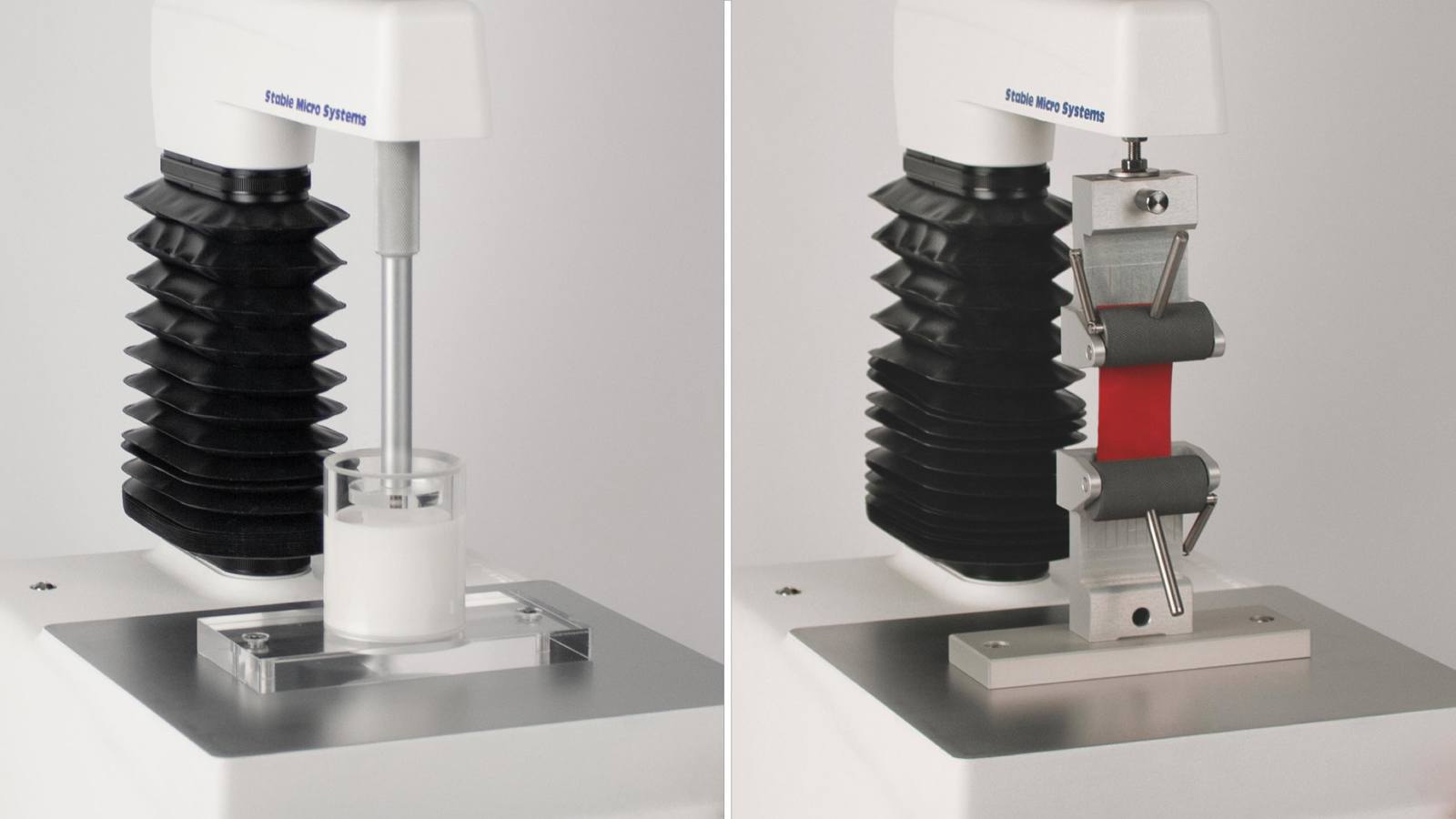
Understanding the difference between materials testing and texture analysis

When we dive into the world of product development and quality control, we often encounter two crucial yet distinct concepts: materials testing and texture analysis. While both play vital roles in ensuring product quality, understanding their differences can significantly impact how we approach product development and quality assurance. Let's explore why you should care about these distinctions and how they can benefit your work.
Purpose and application area
Texture Analysers are designed for consumer-focused testing of soft materials and commonly test varied, less standardised materials like food and cosmetics, while Materials Testing Machines are built for engineering evaluation of structural materials like metals and polymers which require standardised sample preparation (e.g. according to ASTM/ISO standards). However whilst comparison is made using typical examples below, it is important to note that, force range allowing, both instruments can often be used for similar applications.
| Feature | Texture Analyser | Materials testing machine |
| Primary use | Food, cosmetics, pharma, packaging | Engineering materials: metals, plastics, composites |
| Designed for | Simulating consumer / product interaction | Assessing structural / mechanical properties |
| Key focus | Sensory and functional texture (soft matter) | Material strength, stiffness, fracture |
Typical tests performed
Texture Analysers are commonly used in an empirical or imitative manner to simulate sensory interactions (e.g., biting, spreading) with an often welcome flexibility to method development and data analysis techniques, whereas Materials Testing Machines generally measure mechanical strength properties (e.g., tensile, flexural strength), usually with a standard method approach and data analysis of fundamental parameters.
| Criteria | Texture Analyser | Materials testing machine |
| Material type | Solid/semi-solid (homogenous / heterogeneous) | Liquid / semi-solid (homogenous) |
| Measures | Force, deformation | Flow, viscoelasticity |
| Simulates | Mechanical interaction (e.g., bite) | Flow behaviour under stress |
| Typical output | Texture profile (force vs time) | Viscosity, modulus (G', G") |
| Applications | Food, cosmetics, packaging, tablets | Gels, creams, emulsions, pastes |
When to use a Texture Analyser over a Materials Testing machine
When deciding between a Texture Analyser and a Materials Testing machine, it's important to consider the specific requirements of your project. Here's why you might choose a Texture Analyser over a Materials Testing machine:
Sensitivity to subtle texture differences
Texture Analysers are designed to detect and measure subtle differences in texture that might be overlooked by a standard Materials Testing machine. If you're working with food, cosmetics, or pharmaceuticals where texture plays a crucial role in consumer experience, a Texture Analyser is often the better choice.
Focus on sensory properties
While Materials Testing machines primarily focus on mechanical properties, Texture Analysers are specifically designed to correlate with sensory attributes. This makes them ideal for:
- Food product development where you're trying to match or improve mouthfeel
- Cosmetic formulations where the feel of the product on the skin is critical
- Pharmaceutical products where texture affects patient compliance
Specialised probes and attachments
Texture Analysers offer a wide range of specialised probes and attachments designed to mimic real-world interactions with products that focus on the specific property that needs to be measured rather than being forced to use a standard method approach when your sample might not be able to be prepared according to the standard. This provides a solution for new materials and ingredients with unique innovative properties that require a new test method and analysis approach. For example:
- Probes that simulate a finger press to actuate a medical device
- Fixtures that measure spreadability of creams or gels
- Acoustic data capture for measuring the crispness of baked goods or snacks
These specialised tools allow for more relevant and application-specific measurements than a standard Materials Testing machine.
Lower force range
Texture Analysers operate at lower forces (maximum force of 750kg) with high sensitivity for soft samples, while Materials Testing Machines apply much higher forces (up to 100kN) suitable for rigid materials. This makes them more suitable for soft or delicate materials where subtle force differences are significant.
User-friendly and adaptable software
The software accompanying Texture Analysers is often more user-friendly and geared towards texture-specific, sensory or consumer-relevant terms (e.g. stickiness, firmness) rather than stress-strain curves with fundamental moduli calculations that are usually found in materials testing software. It may include features like:
- Texture Profile Analysis (TPA) for food products
- Specialised and innovative calculations for cosmetic and pharmaceutical applications
- Easy-to-interpret graphical representations of textural properties which are adaptable and more focused on functionality and consumer experience.
By choosing the right tool for your specific needs, you'll be better equipped to develop products that not only meet technical specifications but also delight consumers with their sensory qualities.
Now looking to decide which Texture Analyser is most suitable for your testing needs? View our instrument comparison table to compare Texture Analyser models.












